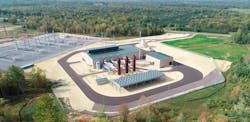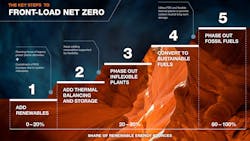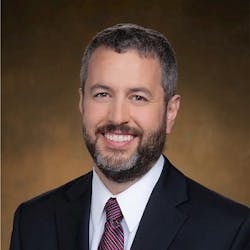Wärtsilä Perspective: Portfolio Diversity pivotal to enabling Renewable Energy Transition
Across the United States, grid planners are facing risks of rolling blackouts again this summer as extreme weather conditions such as heatwaves, droughts, and wildfires continue to threaten grid reliability. According to FERC and NERC’s 2022 Summer Energy Market and Reliability Assessment report, much of the Western U.S., ERCOT, SPP, and MISO are at an “elevated or high risk” of energy shortfalls during peak summer conditions.
Extreme weather due to climate change has become increasingly common in recent years, and accompanying reliability risks are reluctantly being embraced as the new norm, as California and Texas can attest. It seems like the simple solution to these risks would be to build more capacity, ideally from renewable energy resources and batteries that store renewable energy, so that power is always available. However, a number of factors, such as technical grid challenges, supply chain constraints, and lofty decarbonization targets, makes solving the widespread problem of grid reliability much more convoluted.
The growing penetration of wind and solar resources has guided the beginning of the transition to a sustainable grid, but their intermittency has created significant operational challenges. Specifically, the grid requires flexibility and firmness from other resources to balance the real-time variability in wind and solar output. When the sun sets, for example, other resources must be ready to come online quickly and ramp up to replace vanishing solar output. Typically, this flexibility is provided by thermal power plants and battery storage. Whereas current battery storage technologies are limited to durations of about four hours, flexible thermal power plants can provide similar on-demand dispatchability and duration-unlimited grid balancing.
As solar and wind resources continue to connect to the grid and displace traditional baseload generation, these flexibility needs will evolve from the current daily balancing of renewable energy into multi-day and seasonal balancing. Consequently, attempting to operate a power system without the dispatchable attributes offered by flexible thermal resources would require an excessive overbuild of storage to maintain an appropriate level of grid reliability due to the technology’s duration limitations.
Ramping up the Dispatchable Clean Energy Backup
The question then arises: if a power system of solar, wind, and battery storage resources is prohibitively expensive, what is the best path forward for building a decarbonized, reliable, and affordable grid?
A PJM study released in May highlighted the future need for dispatchable renewable resources. It found that by 2035, ramping requirements in excess of 20 GW/hour and 70 GW total will be necessary to balance variable renewables in the ISO’s footprint. The NYISO reached similar conclusions, projecting it will need 32 GW of dispatchable, emissions-free resources by 2040, per its latest Comprehensive Reliability Plan.
These reports are two of many studies that underscore the need for a diverse portfolio of complementary resources to meet the reliability, affordability, and decarbonization needs of the grid. Wind and solar are cornerstones of such a portfolio, but must be supported with energy storage resources and dispatchable sources of clean power.
Read more
EnergyTech's full coverage of Wärtsilä in the C&I Energy Transition
Top Story for June: Ford expands Battery Cell Supply Chain to bolster future EV rollout
Subscribe to our free tri-weekly newsletter for more on Microgrids, Energy Storage and Renewables
Additional technologies, such as energy efficiency, demand response, and other controllable demand-side resources can and should be included in this balanced portfolio, but they are not fully substitutable with supply-side sources of dispatchable power in terms of the reliability they provide.
Importantly, the NYISO’s report notes that clean, dispatchable resources “are not commercially available at this time but will be critical to future grid reliability.” As such, deliberate planning and investment in clean, dispatchable resources will be vital to ensuring their availability within the next two decades.
Future grid needs aside, power systems across the country are facing dispatchable capacity shortfalls today, and resource planners must make decisions to mitigate these risks. But in the face of ambitious decarbonization goals and mandates calling for carbon-neutrality during the 2040-2050 timeframe, many utilities and developers are hesitant to invest in new thermal generation technologies, which could fulfill these dispatchability needs, because of perceived stranded-asset risks.
When rolling blackouts are the consequences, procurement cannot be treated as a “wait-and-see” decision. Rather, grid planners must pursue no-regrets solutions that address the reliability problems of today without compromising the decarbonization goals of tomorrow. New, fuel-flexible thermal resources that can efficiently operate on gas and hydrogen blends and are designed for future conversions to 100 percent sustainable fuels provide one such solution.
The Future Role for RNG and H2
In a proceeding implementing New York’s ambitious Climate Leadership and Community Protection Act, the New York Public Service Commission recognized the potential need for “alternative and low-carbon fuels,” such as renewable natural gas or green hydrogen, to decarbonize the electric sector by 2040 and the state’s economy by 2050. Rigorous modeling studies published by national labs, utilities and independent consultants are establishing the consensus that sustainable fuels can indeed provide the most affordable pathway for a clean energy future. However, the sustainable fuel transition cannot happen overnight.
The first step towards adopting sustainable fuels is for regulators and legislators to publicly recognize their benefits. Continued recognition and incentives for their adoption; for example, through production tax credits and sustainable fuel standards – akin to renewable portfolio standards – will foster advancements in sustainable fuel technologies.
These actions will enable the progression of sustainable fuels along technological learning curves, so that by the time decarbonization targets become binding constraints during the 2040-2050 timeframe, the transition will be seamless.
About the authors: Bhawramaett Broehm is Energy Market Analyst, at Wärtsilä Energy. Prior to that, he was a teaching and research assistant at Johns Hopkins University. He also worked as market mitigation engineer for the New York Independent System Operator (NYISO) and market fundamentals analyst during his internship at Constellation Energy. He holds Bachelors and Masters in Engineering at Johns Hopkins University.
Karl Meeusen is Director of Markets, Legislative, and Regulatory Policy, Wärtsilä North America, Inc. In this role, he advises policy makers and market participants on high-Renewable Energy Systems power system modelling requirements and resource capabilities. Karl has over 20 years of experience in the energy industry. Before joining Wartsila, Karl worked at the California ISO (CAISO) developing and evaluating new wholesale electricity market designs for a variety of issues related to the CAISO’s ongoing efforts to integrate renewable resources. He holds a PHD and Masters in Economics from Ohio State University and Bachelors in Economics and Philosophy from SUNY Brockport.
About the Author
Karl Meeusen and Bhawramaett Broehm, Wärtsilä Energy
The following is a contributed article by Karl Meeusen, Director of Markets, Legislative, and Regulatory Policy, and Bhawramaett Broehm, Energy Market Analyst, at Wärtsilä Energy. Wärtsilä is leading the transition towards a 100% renewable energy future in North America by providing customers market-leading decarbonization technologies, including future-fuel enabled balancing power plants, hybrid solutions, energy storage, and optimization technology, such as the GEMS energy management platform. Wärtsilä has installed 76 GW of power plant capacity and 110 energy storage systems delivered to 180 countries around the world.
EnergyTech is focused on the mission critical and large-scale energy users and their sustainability and resiliency goals. These include the commercial and industrial sectors, as well as the military, universities, data centers and microgrids. The C&I sectors together account for close to 30 percent of greenhouse gas emissions in the U.S.
Many large-scale energy users such as Fortune 500 companies, and mission-critical users such as military bases, universities, healthcare facilities, public safety and data centers, shifting their energy priorities to reach net-zero carbon goals within the coming decades. These include plans for renewable energy power purchase agreements, but also on-site resiliency projects such as microgrids, combined heat and power, rooftop solar, energy storage, digitalization and building efficiency upgrades.



